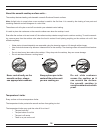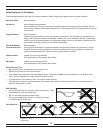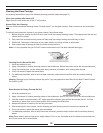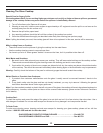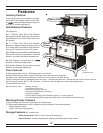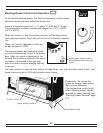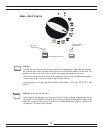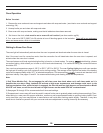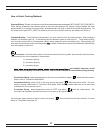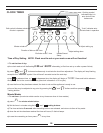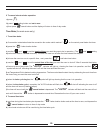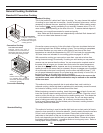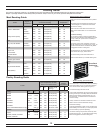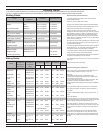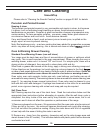
26
Oven Operation
Before You start:
1. Remove the oven racks and oven rack supports and clean with soap and water. (see interior oven rack and rack support
removal pg. 39 ).
2. Unwrap broiler pan and clean with soap and water.
3. Clean oven with soap and water, making sure that all adhesives have been removed.
4. Set time on the clock, clock must be set or oven will not function! (see timer section pg.28).
5. Turn oven on to 500°F (260°C) for 30 minutes to burn off bonding agents in the insulation. There will be an unpleasant
odour and some smoke, which is unavoidable.
Getting to Know Your Oven
The oven light will automatically activate when the oven is opened and deactivate when the oven door is closed.
Also if the oven is set for convection mode, then the convection fan will deactivate when the oven door is opened, and
activate when the oven door is closed.
The oven features multi level regular baking/broiling in timed or un-timed modes. For energy
batch baking, choose
convection baking, which allows you to bake on multi levels simultaneously. For traditional baking the convection feature
should be OFF.
Your oven has a temperature range of 150° F to 550° F (65°C to 290°C). The oven Cycling Light glows until oven reaches
the high end of heating cycle, then cycles off and on during cooking. The average of the high and low levels of the heating
cycles will be approximately within 30° F of selected temperature. This temperature
is normal and standard in the
appliance industry. See pages 31 and 32 for recommended baking and roasting times and temperatures.
Note:
1) Self Clean Models Only - Do not engage the self clean oven door latch when not in self clean mode, as it is
possible the oven door safety interlock will activate at high oven temperatures and damage could occur to the
locking mechanism. Also, while the latch is engaged, the front left and two right burners are deactivated on Model
8210 30" self clean, as well the two left and two right burners on the model 6210 48" are deactivated.
2) See pages 30 through 32 for recommended broil times and settings.
3) Temperatures in ovens may shift over time and it is natural for the user to gradually adapt cooking times accordingly. Then,
when baking in a new oven with proper calibration, results may not be as expected based on previous baking habits. Oven
cavity sizes also vary from manufacturer to manufacturer and could affect cooking results slightly. Therefore, it may take
some time to familiarize yourself with your new oven and some adjustment in cooking times may be necessary.



